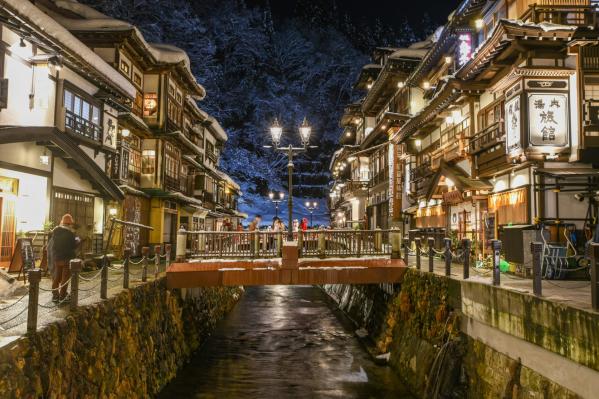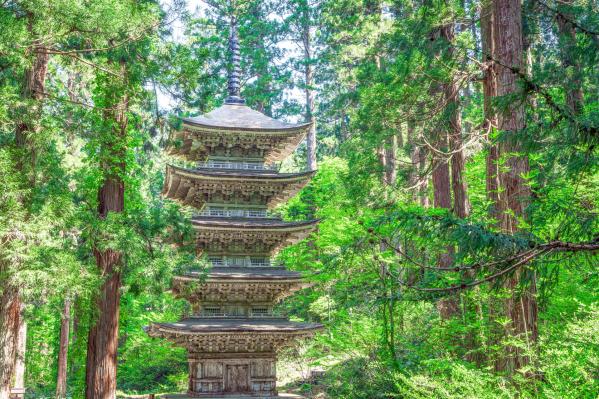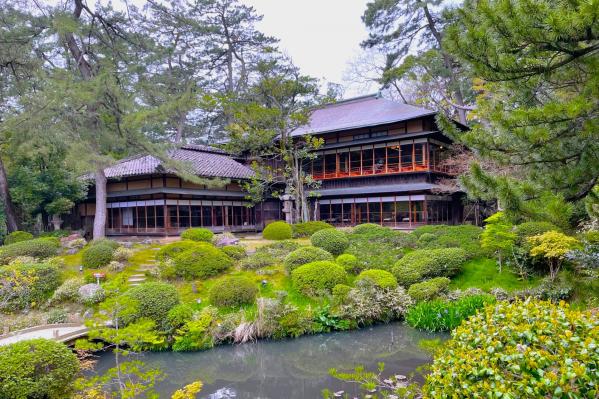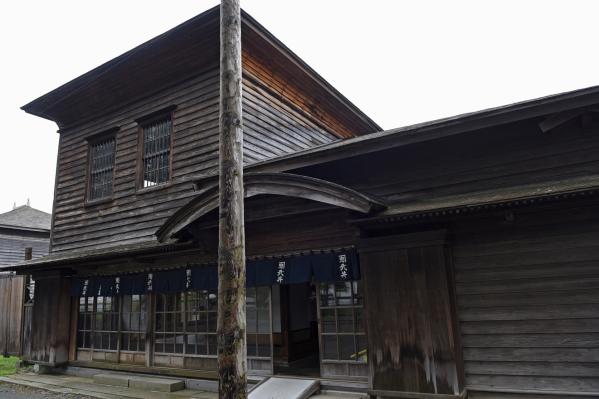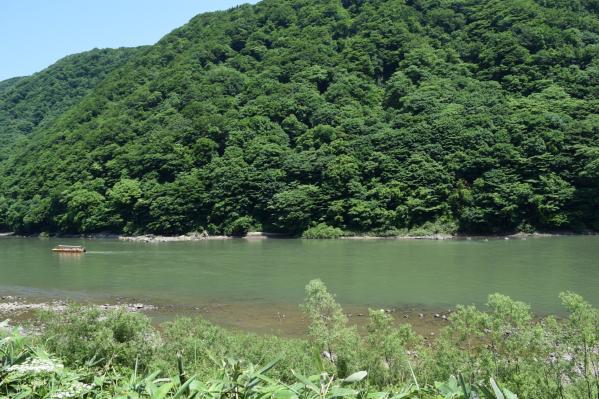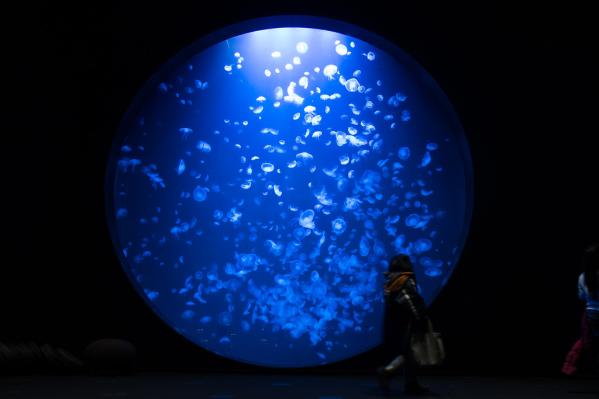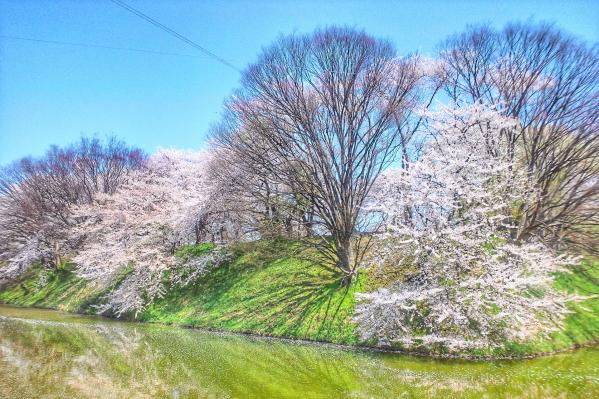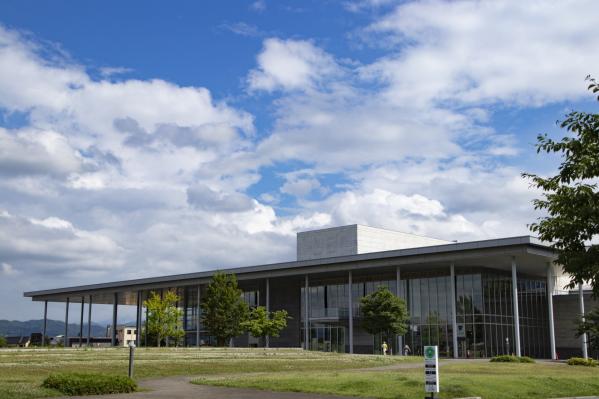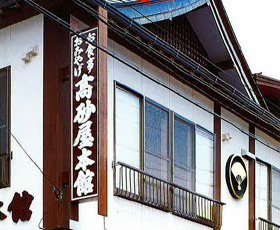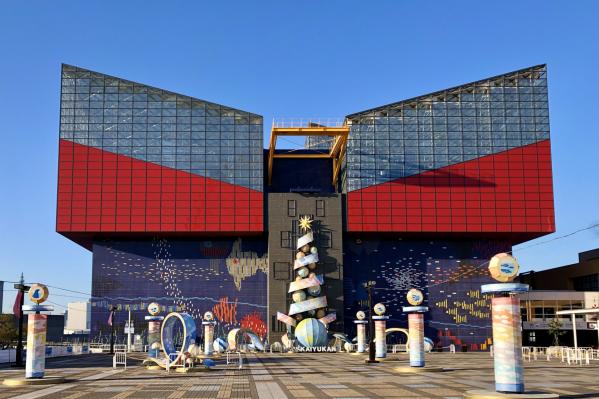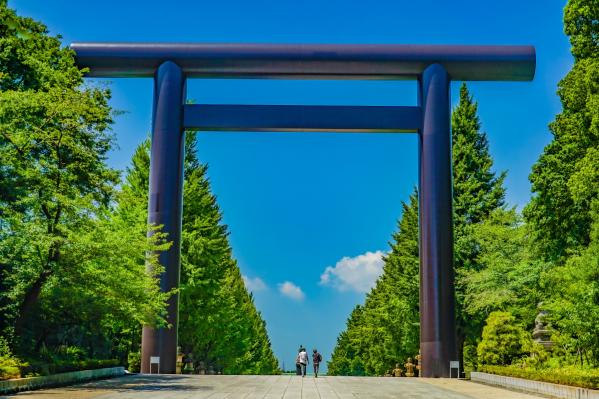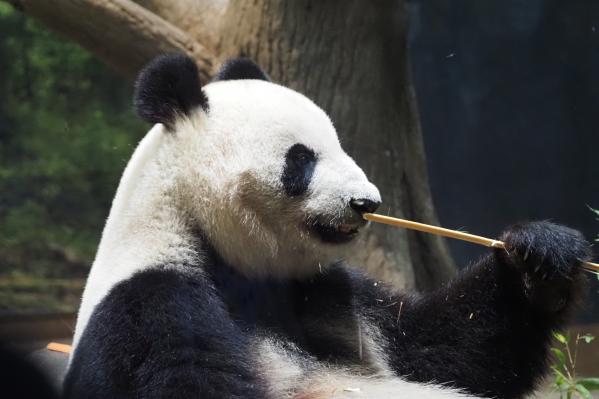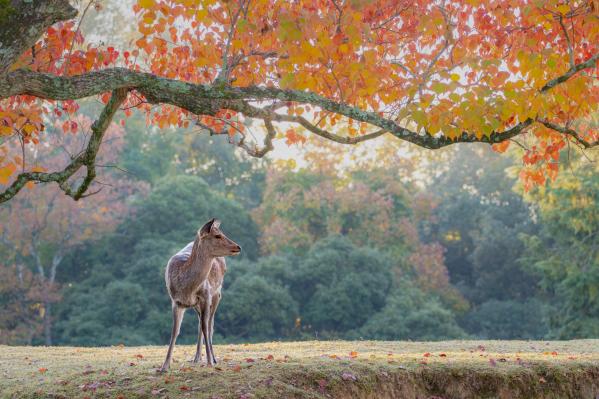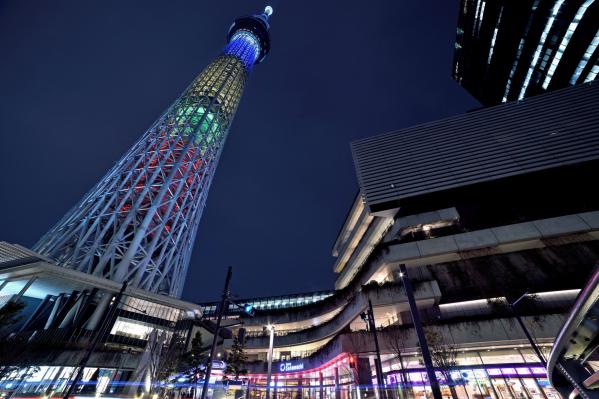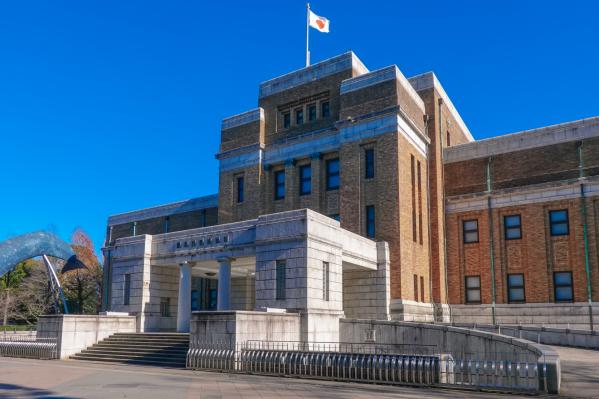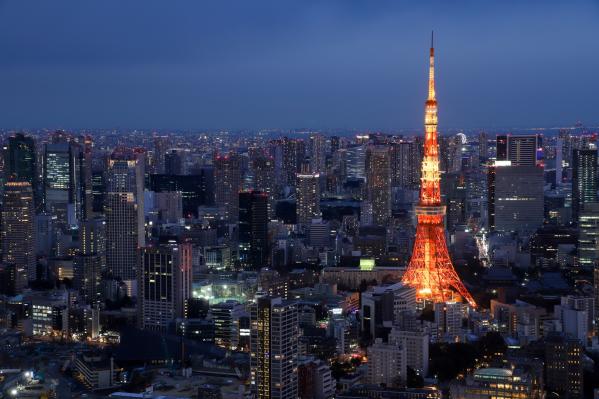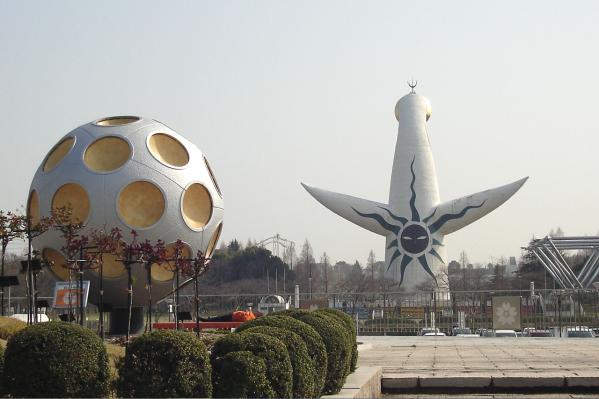
Risshaku-ji (Yamadera)
Notable attractions include the country's oldest wooden building made of beech, the "Konpon Chūdō," the power spot "Amida Cave," and the "Nio Gate" guarded by Nio statues. Additionally, at the "Kaizandō and Nōkyōdō," the red Nōkyōdō stands atop a gigantic boulder, offering a magnificent view of the majestic mountains behind it. The final destination, "Okunoin and Daibutsuden," is believed to provide benefits in cutting off bad connections.
In the town at the foot of Yamadera, visitors can also savor local delicacies such as "Yamadera-chikara konnyaku," "cherry blossom soft serve ice cream," and "dashi soba," which are quite popular. Renowned in the literary world, it is also famously associated with the great poet Matsuo Bashō, who visited and wrote, "In the quietness, the voice of the cicada seeps into the rock."
Where history, nature, and literature intersect, Yamadera is cherished by many as a place for both physical and spiritual journeys.
Basic Information
- Spot Name
- Risshaku-ji (Yamadera)
- Location
- 〒999-3301 4456-1 Yamadera, Yamagata City, Yamagata Prefecture, Japan
- Access
- From JR Senseki Line "Yamadera Station" to the trailhead, it takes about 6 minutes on foot.
Yamagata Station: 30 minutes by car, 20 minutes by JR Senseki Line.
Yamagata Kita IC: 15 minutes by car.
Yamagata Airport: 30 minutes by car.
Tendo Onsen: 15 minutes by car.
Sakata City: 2 hours 30 minutes by car.
Tsuruoka City: 2 hours by car *using Yamagata Crossway Expressway.
Kaminoyama Onsen: 40 minutes by car.
Yonezawa City: 1 hour 30 minutes by car.
Zao Onsen: 60 minutes by car.
Sendai City: 1 hour 30 minutes by car, 50 minutes by JR Senseki Line. - Parking
- Please use the nearby paid parking facilities.
- Business Hours
- 8:00 AM - 5:00 PM (Reception until 4:00 PM) *Hours may vary by season.
- Fees
- Entrance fee (Sanmon Okunoin)
Adults: 300 yen
Junior high school students: 200 yen
Children (4 years and older): 100 yen - Official Website
Map
Detailed Information
In the second year of the Jōgan era (860), the third chief priest of the Tendai sect, Jikaku Daishi Ennin, opened this sacred mountain, which represents the Tōhoku region. It is also known for Matsuo Basho's famous haiku: "In the quietness, the voice of a cicada seeps into the rocks." Blessed with abundant nature, visitors can enjoy the distinct atmospheres of all four seasons: spring, summer, autumn, and winter. This place is called Hōjusan Risshakuji, commonly referred to as "Yamadera." It belongs to the Tendai sect and was established by Jikaku Daishi Ennin in the second year of Jōgan (860). At that time, Jikaku Daishi purchased the surrounding area of ten ri with a thousand ryo of gold and three thousand tan of hemp cloth from the local landowner and dedicated himself to spreading the teachings here with over three hundred halls and pagodas. At the time of the temple's founding, he received the eternal flame of law lit by the great teacher Dengyō from the main temple, Enryakuji, and maintained the unbroken practice of copying sutras every four years, dedicating incense continuously to the spirit of his founding master. Later, during the Kamakura period, the temple thrived, but it also suffered during the Muromachi period due to war. However, in the Edo period, it received 1,420 stones of certificate land, leading to the reconstruction and enhancement of its halls. In the second year of Genroku (1689), the famous haiku master Matsuo Basho visited this site during his journey on the Oku no Hosomichi and left the well-known line: "In the quietness, the voice of a cicada seeps into the rocks."
Today, the temple grounds cover about 100 acres (330,000 tsubo) and house over 30 halls and pagodas, preserving the three eternals (the eternal flame of law, incense, and the practice of sutras) to this day.
**Guide to the Halls**
▶ **Konpon Chūdō (Main Hall)**: The Konpon Chūdō serves as the main hall for the entire Risshakuji temple. The current structure, reconstructed in the first year of Enbun (1356) by Shiba Kaneyori, the first lord of Yamagata Castle, is a hip-and-gable roof building, featuring five bays on four sides. It is said to be the oldest building made entirely of beech wood in Japan, composing about 60% of the structure. Inside, it enshrines a wooden statue of Yakushi Nyorai, believed to be created by Jikaku Daishi, along with the attendants Nikko and Geko Bosatsu and the twelve zodiac deities, with Monju Bosatsu and Bishamonten on either side.
▶ **Semizuka (Cicada Mound)**: Matsuo Basho visited Yamadera on May 27, 1689, in the old calendar, and it is said he composed haikus at an inn that once stood at the foot of the mountain. Following Basho, his disciples visited this site to reflect on his presence and to commemorate it as the place where he was inspired to write his famous haiku. They buried a piece of Basho’s writing underneath a stone mound, which became known as Semizuka. Many haiku poets and singers, including Shigeji Saito, visited Yamadera, and poems inspired by the unchanged landscape remain as stone markers along the approach path.
▶ **Kaizan-dō (Founder's Hall)**: The Kaizan-dō stands atop Hyakujō Rock and is dedicated to Jikaku Daishi. The remains of the master are buried in a golden coffin within a natural cave beneath this hall. A wooden statue of the master is enshrined here, with food and incense offered continuously morning and evening. The hall is typically closed, but it is opened to the public once a year on the anniversary of the master's death, January 14, for a memorial service. To the left of the hall, on a rock, is a small red hall where sutras are stored, considered the oldest building within the mountain. Here, the Lotus Sutra, which was copied over four years in the Okunoin, is kept. It is registered as a cultural asset by the prefecture, with restoration carried out in 1987. Additionally, right above this building is the Godai-dō, which houses the Five Great Myōō, offering a panoramic view of Yamadera.
▶ **Okunoin (Inner Sanctum)**: Commonly referred to as Okunoin, its official name is Nohō-dō. The Nohō-dō, which serves as the inner sanctum, is where the Buddha images of Shakyamuni and Tahō Nyorai, which Jikaku Daishi was said to have carried from China, are enshrined. Located at the end of the approach, the name “Okunoin” reflects its significance. The monastic practices that Jikaku Daishi initiated, known as Ishi-goma and Ichiji Sanrei, are safeguarded here. The Daibutsuden (Great Buddha Hall) to the left of the Nohō-dō houses a five-meter-tall golden statue of Amida Nyorai, attracting many visitors for offerings, regardless of sect affiliation.
▶ **Shōsōin**: Ascending from the Niōmon gate, you arrive at Shōsōin. It used to be one of the twelve subsidiary halls located at the top of the mountain and enshrines Amida Nyorai, said to be crafted by Jikaku Daishi, along with a statue of Bishamonten created by Unkei. In the first year of Meiji, it merged with Zenko-ji and Gokuraku-in, and it remains to this day.
▶ **Kinjō-in**: As one of the twelve subsidiary halls, it enshrines the Eimei Jizō Bodhisattva and other statues of the thousand deities and Fudō Myōō. The temple was reconstructed in March of the eleventh year of Tenpo (1840) by Suimeisaku Kai.
▶ **Chūsei-in**: The main deity here is Amida Nyorai, merged with Fudō-in in the first year of Meiji. A series of stone monuments of the Tozawa family, historically of the Shinjo clan, stand at the rear cliff, and across the road lies the mausoleum of Mogami Yoshimitsu, where the spirits of the Mogami clan are enshrined by the Jizō statue known as Issun-Issa.
▶ **Kazō-in**: Also one of the twelve subsidiary halls, it is said that Jikaku Daishi resided here when he first opened the mountain. The principal deity is said to be Kannon Bosatsu, crafted by Jikaku Daishi. The cave on the right contains a three-tiered pagoda that is modeled after the cave itself. Built in the sixteenth year of Eishō (1519), this small pagoda, measuring about 45 centimeters between the columns, is constructed using similar methods as other pagodas and is therefore designated as a National Important Cultural Asset for being the smallest three-tiered pagoda in the country.
Risshaku-ji (Yamadera) Movies
Yamagata Tourist Attractions
View ListGinzan Onsen
Ginzan Onsen is a charming hot spring resort that feels like stepping back in time, characterized by its retro scenery. Traditional wooden ryokans (inns) line both b...
Mount Haguro Five-story Pagoda
The Haguro Five-Story Pagoda is a historic structure considered to be the oldest in the Tohoku region, located at the entrance to the "Ichi no Saka" on the approach ...
Honma Museum of Art
Honma Art Museum was established in 1947 as Japan's first private art museum after World War II, based on the honma family's villa "Seienkaku" and the garden "Tsurum...
Sake Brewery Museum Toko's Brewery
The "Sake Brewing Museum Tokko no Sakagura" in Yonezawa City is located in an environment well-suited for sake brewing, blessed with abundant water and high-quality ...
Mogami Gorge Basho Line Tour (Mogami River Boat Ride)
The Mogami River in Yamagata Prefecture offers the "Mogamigawa Basho Line Boat Ride," where you can enjoy seasonal scenery throughout the year. This boat ride, like ...
Kamo Aquarium
Located in Tsuruoka City, Yamagata Prefecture, "Kamo Aquarium" is an impressive aquarium housed in a modern white-walled building along the Sea of Japan. This aquari...
Yonezawa Uesugi Museum
The Yonezawa Uesugi Museum is located on the site of the main keep of Yonezawa Castle and houses valuable cultural assets related to the Uesugi family. Adjacent to t...








